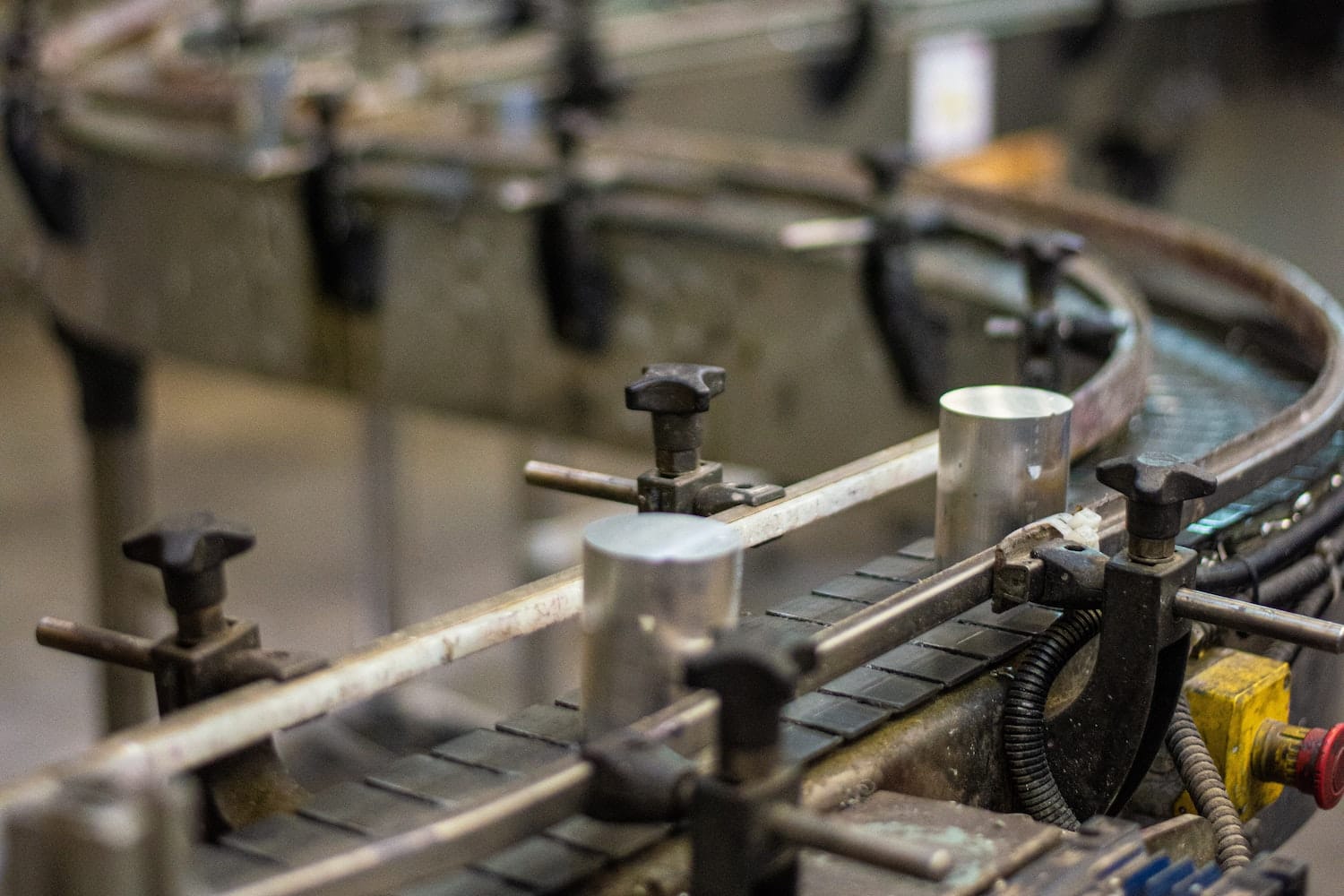Why You Should Consider Custom Manufacturing Products
Are you an e-commerce seller and curious about custom manufacturing products? You’re not alone. Many are realizing that bringing a new product to market has advantages. Let’s start with the online resale business, and why custom manufacturing your own products may make sense.
Online resellers have at least one thing in common. They all are looking for coveted first-page status, where consumers can see and buy their products before they click on the same product from another reseller. Finding underserved markets, untapped niches, and opportunities to win marketshare are all part of the game. Sound familiar?
As you well know, the challenge is keeping margins high enough to make it worth your effort. Excessive competition breeds price wars. When there are many players in the game vying for the same products, everyone tries to undercut the next guy, forcing price reductions where no one wins except the customer.
You may be able to cut a better deal with the supplier or lower your shipping costs somehow, but eventually, others will too. Even the platform itself, including Amazon, can throw their hat in the ring. They know a good opportunity when they see one and often private label hot items, selling them for less than anyone because they have the best means to do so.
In fact, analysts predict that Amazon will post $31 billion in private-label sales by 2022. For reference, that’s double of what Nordstrom sold in 2019. Good luck competing against Amazon. And don’t forget the fact that the factories can compete and sell direct as well for much less than what you could ever sell the same product for. With all of the competition (that only keeps getting stiffer), it becomes “a race to the bottom,” a common phrase used for e-commerce reselling.
Related: How to Use a Product Development Plan to Build a Valuable Business
Many e-commerce sellers find great success on platforms like Amazon and eBay. If they didn’t, the competition wouldn’t be so fierce. But even with the winners, frustration abounds with the thin margins and constant attempts to carve out market share. That’s why custom manufacturing products is becoming more popular. It’s a great way to diversify your product portfolio and build sustainable brand value.
Instead of being dependent on the competition’s next move, you can develop your own products and sell them at your own price, retaining intellectual property rights and all margin because there is no middleman. You can even allow others to resell your products and take a nice cut. As you build your fanbase, you can custom manufacture more products to expand your product line and make a name for yourself.
While manufacturing your own custom products takes time and investment, the rewards can far exceed any return you will get from reselling someone else’s products. And once you get the product development process down and have the right network or resources behind you, iterating on new products becomes more streamlined and cost-effective.
Example: A Reseller vs. A Brand Custom Manufacturing Its Products
To illustrate the benefits of either moving towards custom manufacturing products or adding them to your resale product line, let’s look at two scenarios: “Company A” and “Company B.”
Keeping all things equal between both companies, each have an FBA business only on Amazon, with five products with a $25 average price. Both have a COGS of $8 with gross margins at 68%. Both report 25 sales per month per product, earning $95,000 per month at $1.1 million annually. Exactly the same set up.
Now, let’s throw in the differences. Company A has an unrelated set of products with no customization or common brand. They are strictly reselling a variety of existing products in hopes of making enough margin to be profitable.
Company B has all of its products in the same category and customize each product under one brand. They either develop their own products from scratch or improve upon existing products to come up with a new product.
From a brand value perspective, one that your ultimate goal is to sell to a larger brand, which company do you think is more attractive? If you were looking to acquire a business, which company would you consider?
Let’s look at what acquirers would want in a potential buy out. First, they want to see a brand has a product that is differentiated in the market. This could mean the product is patented and/or it is unique – no one else is selling it or there isn’t much competition. Resellers inately do not have a brand or products of their own, and the resale market always has competition.
Acquirers would also want to see that your product line can be extended with other new products. Having a focused product line increases supply chain leverage and reduces operational overhead. Having an extensive product line, as with resellers, is much more expensive and complicated to manage.
Can your product be sold through multiple channels, such as Shopify, eBay, and Etsy, or are those platforms already saturated with the same or similar products? Acquirers want to see opportunities to grow marketshare across channels.
It’s easy to see that a business with custom manufactured products is much more attractive to potential buyers than an e-commerce business with no brand value. If you want to build a truly valuable brand, you have to move beyond reselling to develop your own products.
Two Approaches to Building Your Business
The Product Listing Approach
The goal of the product listing approach is to identify existing products that aren’t selling as well as they could be if they had some modifications. You can find these “diamonds in the rough” products by establishing filters, looking at things like category, search volume, price point, reviews, and trends.
While buying existing products is faster and has less up-front costs than custom manufacturing, keep in mind that other sellers are doing the same thing, using common research tools to find product opportunities. While this approach can reveal potential wins, there is a good chance other sellers are finding the same products to order and sell. You do not have any intellectual property in this case, meaning anyone, such as Amazon or the factory, can sell the same product at a lower price.
The Custom Manufacturing Approach
As with all product development, the best products were made using the “customer first” approach. Research is essential before you invest money into developing any product. Use industry tools to research within your specific segment. Take the time to learn everything you can about your potential customers, your competition, and the market.
Related: How to Research a Better Product Opportunity
When you are ideating on new product ideas, start with your target customer in mind, and define that person in detail. Then, identify multiple products that your ideal customer is already buying. Your product idea should align with your customer’s wants and their typical buying habits.
Once you hone in on the right product to develop, have additional products ready to go. Whether you are coming up with an entirely new product or improving on existing products, make the product yours through incremental innovation. Continue to innovate as you create additional products.
Custom products require design, molds, and tooling, which does add costs, but they sustain higher margins with less direct price pressure. They also create an opportunity for you to own the intellectual property. Building your own brand requires time and investment, but establishes much greater long-term value.
What Kind of Business Are You Building?
There are several questions you can ask yourself if you are considering whether custom manufacturing products makes sense for your business.
- What is my end goal?
- Am I building the company for an exit or for cash flow?
- Am I pursuing a custom brand or “hole in the market” strategy?
- What is my advantage over companies selling the same product?
- Can I sell products anywhere else besides Amazon?
- Can I leverage an existing product(s) to begin and then shift to another strategy?
5 Steps to Creating Custom Manufactured Products
If you determine you are ready to begin developing custom branded products, there are five steps to maximize success.
- Focus – identify your target customer
- Research – explore product opportunities
- Design – create your own design
- Source – find the best factory
- Manufacture – manage production
Unless you already have a proven product development process, sophisticated research tools, and a network of experts at your disposal, following each step will be challenging. There are a thousand ways fail. Work with a company like Gembah to ensure you get each step right the first time so you don’t waste time and money.
For instance, Gembah will help you identify your target customer with qualitative and quantitative research. By the end of the research phase, you will know which product to develop or improve, how you should design the product, and what marketshare and returns you can expect.
When it comes to design, sometimes incremental innovation is all you need. Perhaps simply changing the color, packaging or product design will satisfy customer desires. Research from phase one will identify customer desires and point you in the right direction.
Your research may show that new innovation is the best way to go, adding major features and functionality or materials and components to an existing product. The more complex the innovation, the more expensive and time consuming. On the other hand, you will also have a more differentiated product. Designers and engineers will help you determine which modifications are viable and cost-effective.
If you determine that creating your own product design is best, lean on your designers and engineers to work through sketches and a 3D rendering. They will package your deliverables with proper specifications for factories to easily quote and manufacture, saving you time and costs.
Sourcing is another area where you will likely need assistance, as where you have your product manufactured is critical to the product development process. With so many factories to choose from and no way to know which is truly reputable or not, independent sourcing experts will vet factories for you and recommend ones that are experienced producing your particular product. Again, this will save you time and money.
Related: Overseas Manufacturing: China Has Some Competition
Once you’ve selected a manufacturer, you have to stay on top of production and manage the relationship. This can be particularly difficult if your manufacturer is overseas. As with all stages in product development, Gembah helps clients with manufacturing by assigning a dedicated, local representative to oversee production and maintain the relationship on your behalf. They will ensure the factory is meeting compliance and testing requirements, quality control standards, and established product specifications, as well as using the most efficient and cost-effective logistics practices.
You can manage the entire product development process yourself, but many entrepreneurs, small businesses, and e-commerce sellers dipping their toes into custom manufacturing products prefer partnering with a company like Gembah. Having all of your resources and experts in one place streamlines the process and makes it much easier to manage.



